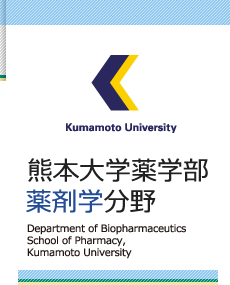Biol Pharm Bull.に論文(総説)が掲載されました。(腎病態マーカーとしての酸化型アルブミン)
Biol Pharm Bull. 2022;45(12):1728-1732. doi: 10.1248/bpb.b22-00586
Oxidized Albumin: Evaluation of Oxidative Stress as a Marker for the Progression of Kidney Disease
Hiroshi Watanabe
Abstract
Oxidative stress has been reported to be associated with the progression of renal pathology as well as with the onset of complications associated with this condition. Bardoxolone methyl, a nuclear factor-erythroid 2-related factor 2 (Nrf2) activator with anti-oxidative and inflammatory modulation effects, has been reported to improve renal function in clinical trials. As of this writing, there have been no systems for the quantitative evaluation of oxidative stress that could be applied as a clinical test. We recently reported on post-translational modifications of albumin using electrospray-ionization time-of-flight mass spectrometry (ESI-TOF MS) and the results indicated that oxidized albumin (cysteinylated albumin: a molecule that was oxidatively cysteinylated at Cys34) was found to increase with the progression of renal pathology. A clinical study demonstrated that monitoring the levels of oxidized albumin could be useful for the early diagnosis of diabetic kidney disease and for predicting renal prognosis. Higher levels of serum oxidized albumin were also associated with cardiovascular complications or sarcopenia in patients who were undergoing hemodialysis. The overall findings indicate that oxidized albumin could also be an index of therapeutic efficacy against kidney disease. Oxidized albumin is not only a marker for kidney disease but also a nephrotoxic substance. This suggests that measuring the levels of oxidized albumin could be a biomarker for diagnosing the progression of and complications associated with renal disease in addition to evaluating the efficacy of therapeutic drugs.
Keywords: biomarker; hemodialysis; kidney disease; oxidative stress; oxidized albumin; post-translational modification.
年月別
- 2023年1月
- 2022年12月
- 2022年10月
- 2022年7月
- 2022年6月
- 2022年5月
- 2022年4月
- 2022年3月
- 2022年2月
- 2022年1月
- 2021年12月
- 2021年11月
- 2021年10月
- 2021年9月
- 2021年8月
- 2021年7月
- 2021年6月
- 2021年5月
- 2021年4月
- 2021年3月
- 2020年12月
- 2020年11月
- 2020年10月
- 2020年8月
- 2020年7月
- 2020年5月
- 2020年4月
- 2020年3月
- 2020年1月
- 2019年11月
- 2019年10月
- 2019年9月
- 2019年8月
- 2019年7月
- 2019年5月
- 2019年1月
- 2018年11月
- 2018年9月
- 2018年6月
- 2018年5月
- 2018年4月
- 2018年3月
- 2018年2月
- 2017年12月
- 2017年11月
- 2017年10月
- 2017年8月
- 2017年7月
- 2017年6月
- 2017年5月
- 2017年4月
- 2017年3月
- 2017年2月
- 2016年12月
- 2016年11月
- 2016年9月
- 2016年8月
- 2016年7月
- 2016年6月
- 2016年5月
- 2016年4月
- 2016年3月
- 2015年12月
- 2015年10月
- 2015年9月
- 2015年8月
- 2015年7月
- 2015年6月
- 2015年5月
- 2015年2月
- 2014年12月
- 2014年11月
- 2014年10月
- 2014年9月
- 2014年8月
- 2014年7月
- 2014年6月
- 2014年5月
- 2014年4月
- 2014年3月
- 2014年2月
- 2014年1月
- 2013年12月
- 2013年11月
- 2013年10月
- 2013年8月
- 2013年7月
- 2013年6月
- 2013年5月
- 2013年4月
- 2013年2月
- 2013年1月
- 2012年11月
- 2012年10月
- 2012年7月
- 2012年5月
- 2012年4月
















